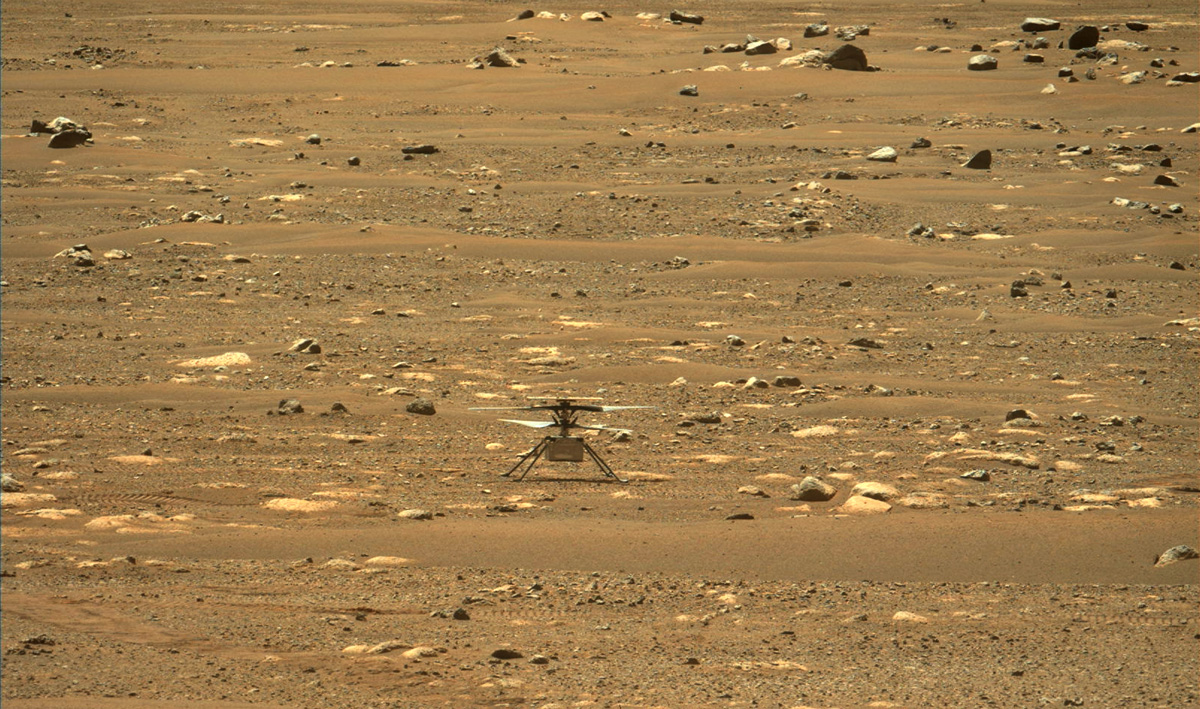3 min read

At 12:31 a.m. PDT on Monday, April 19, 2021, the Ingenuity helicopter team is going to attempt the first ever powered, controlled flight on another planet. We are optimistic that the helicopter will be able to take off from the Martian surface at this time; however, this is a test and we are prepared that it may not occur. Let me explain.
Ingenuity is a technology experiment. As such, our plan is to push the envelope and learn by doing. We take risks that other missions cannot, weighing each step carefully.
Over the last week, we’ve been testing the two solutions to address the “watchdog” timer issue that prevented the helicopter from transitioning to “flight mode” and performing a high-speed spin test of the rotors on April 9. These solutions, which have each been verified for use in flight are: 1) adjusting the command sequence from Earth to slightly alter the timing of this transition, and 2) modifying and reinstalling the existing flight control software, which has been stable and healthy for close to two years. The first solution requires adding a few commands to the flight operations sequence and has been tested on both Earth and Mars. From testing this technique on Ingenuity over the last few days, we know this approach is likely to allow us to transition to flight mode and prepare for lift-off about 85% of the time. This solution leaves the helicopter safe if the transition to flight mode is not completed. On Friday, we employed this solution to perform our first-ever high-speed spin test on Mars.
This solution is the least disruptive to a helicopter that, up until we identified the watchdog issue, has been behaving just as we expected. It is the most straightforward, since we do not have to change its configuration.
We also know that if the first attempt does not work on Monday, we can try these commands again, with good probability that subsequent tries in the days following would work even if the first doesn’t. For these reasons, we’ve chosen to pursue this path.
Because engineers believe in back-up plans, we have also been working this week on the second solution, which requires modification and reinstallation of Ingenuity’s flight control software. The new software for this solution has been transmitted to NASA’s Perseverance rover, which hosts the helicopter base station that ultimately communicates with Ingenuity. If our initial approach to flight does not work, the rover will send the new flight control software to the helicopter. We will then require several additional days of preparation to load and test the new software on Ingenuity, redo the rotor tests in this new configuration, and recycle for a first flight attempt.
Our team considers Monday’s attempted first flight like a rocket launch: We’re doing everything we can to make it a success, but we also know that we may have to scrub and try again. In engineering, there is always uncertainty, but this is what makes working on advanced technology so exciting and rewarding. We have to continually innovate and develop solutions to new challenges. And we get to try things others have only dreamed of.
Data from this first flight attempt will return to Earth a few hours following the autonomous flight. Join us at 3:15 a.m. PDT on Monday for a watch-along livestream to see if our solution works.
Written by MiMi Aung, Ingenuity Mars Helicopter Project Manager at NASA's Jet Propulsion Laboratory







